In southern Mexico, a community is still reeling from a devastating natural disaster.
The Istmo de Tehuantepec has always been a fiercely independent place. In the southern part of Oaxaca state, the Istmo is the narrowest point in Mexico, the cinched-in waist of the country’s reclining odalisque, a region known for its raucous parties and dark sense of humor and bold resistance to anything imposed from outside. In 1981, Juchitán de Zaragoza became the first municipality in Mexico to elect an opposition party to power. Nearly a decade earlier, San Mateo del Mar, populated by the twice-conquered Ikoots indigenous community, had developed and implemented an entirely bilingual preschool program, the first of its kind in the state. In the course of the 19th century, Istmeños resisted interventions and invasions by the British, the French, and the Mexican government itself (in 1850 Mexico’s first indigenous president and national hero, Benito Juárez, responded to a revolt to reclaim use of local salt mines by sending troops to burn Juchitán to the ground). The people are brash and combative, defiant and proud, a little difficult and wickedly funny. Above all, they are self-sufficient. But all of that goes only so far in preparing you for catastrophe.
At 11:49 p.m. on the night of Sept. 7, an 8.2 magnitude earthquake struck off the southern coast of Mexico, the strongest to hit the country in a century. Felt as far south as El Salvador and as far north as Mexico City, no place suffered greater or more widespread damage than the Istmo, where more than 800,000 people were affected and more than 70,000 homes damaged, nearly 15,000 of them beyond repair.
Gloria Nuñez, who lives in the town of Ixtaltepec, 20 miles inland from the Pacific coast, had only just gotten into bed when the ground began to shake. “I jumped up and ran to the window—Jesus, Mary, and Joseph, the ground felt like Jell-O! When my brother came in, we couldn’t even walk to leave. We just stood there in the doorway, holding each other,” she told me one afternoon in early October, almost exactly a month later. We sat under a flimsy blue tarp on the sidewalk, just outside the walls of her half-collapsed home. Her eyes welled with tears. “When it ended, we opened the window, and there was just a white cloud, like a fog. No, I’ve never seen anything like it before, not in my 67 years.”
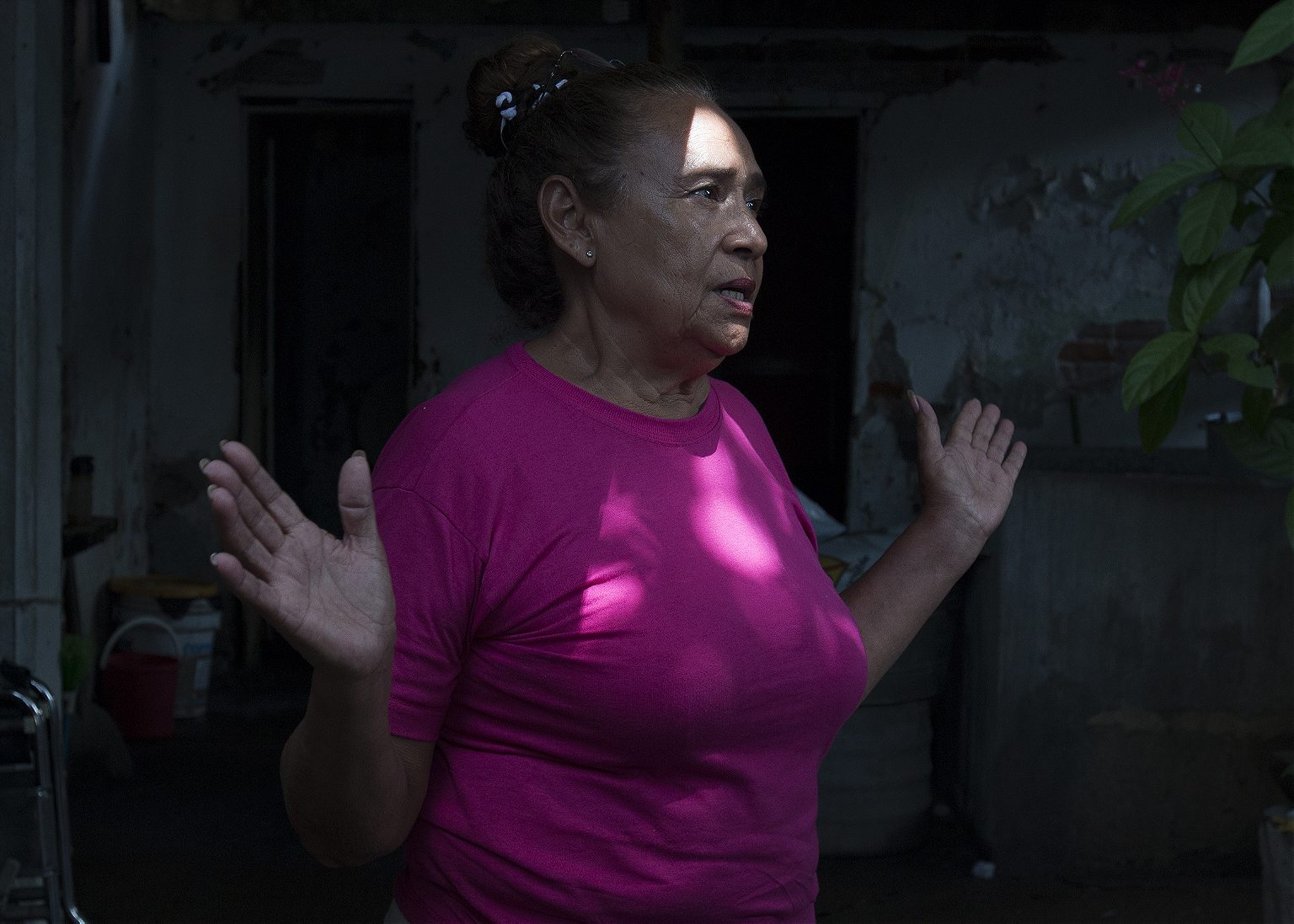

In the town of Union Hidalgo, an hour to the east, Kristal Aquino, a program coordinator for the local branch of a support group for trans women and queer men called Transformandome (literally Transforming Myself), was dozing off in the hammock in her bedroom. “When the ground started to shake, I got up and ran outside—all zigzag of course—out to the patio. I grabbed onto a post there just to stay standing. And I don’t know if it’s because it was dark, but I swear the mango tree was brushing the ground,” she told me, gesturing across the blank concrete slab that used to be her home as though it were a three-dimensional blueprint. “Once I was there outside I suddenly just thought, ‘Shit! My TV!’ and I ran back in to get it!” She laughed uproariously, her whole body shaking. “I must have been delirious! I don’t know how I made it out alive.” When the earth stopped moving, she went back in to see what had become of her belongings (the TV made it out unscathed). Of the 19 statues of the Santa Muerte that she kept in a shrine in her room, just one had fallen. “La Protectora”—the protector—“She was decapitated,” Aquino said. “And I thought, That was for me. Without her I would never have made it out alive.”
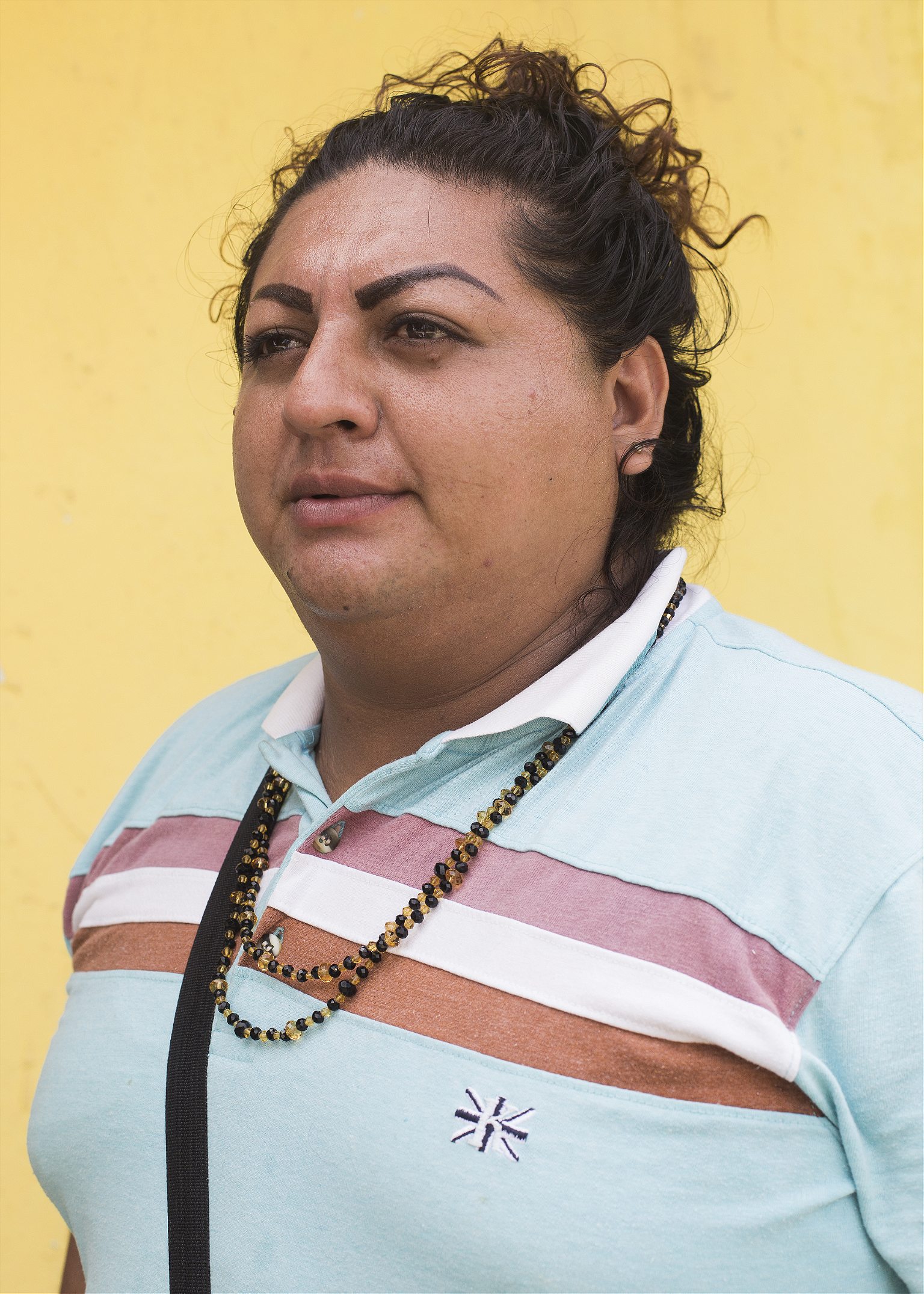
Twenty miles south in the fishing village of San Mateo del Mar, set on a narrow bar of land between the Pacific and a giant inland lagoon known here as the Mar Muerto (or Dead Sea), loamy soil burst through the floor in the home that Epifania Zaragoza Camacho had spent 20 years building with her husband, Primitivo Olivo Escandón. “I got out of bed and took a step and the ground went out from under me,” she said as she led me into the room where she’d been sleeping that night. The earth rose so fast—or perhaps the house sank, she’s still not sure—that it blocked the door, trapping her inside. Since that night, Epifania and Primitivo have slept near the precariously tilting trunk of a 50-foot fruit tree at the center of their garden. Her saint lost his head, too.
Elsewhere in San Mateo, neighbors described their floors splitting, just like Zaragoza’s, and hot water burbling up through the cracks. Others described their wells bursting like fountains. Fishermen who’d gone out that night to gather tortoise eggs, a traditional food in the Istmo, came home to their families with stories of a sea that looked like it was boiling. Others described the water going dead calm and slipping away from the coast, like a sheet pulled off a bed. All of them described the deep cracks that opened in the sand and feeling certain that the earth would swallow them whole.
Now, nearly two months after the initial quake struck, the earth is still shaking. There have been more than 8,000 aftershocks so far, many of them strong enough to send loose bits of stone tumbling to the ground. “Our bodies are basically seismographs now,” Aquino told me that day in Union Hidalgo. “The ground moves and we say, 4.8!” Many families sent grandparents and great-aunts off to recuperate in Puebla or Mexico City, where, less than two weeks later, on Sept. 19, they lived through yet another earthquake, this one with its epicenter in the central state of Puebla. It brought down dozens of buildings in Mexico City, killed more than 300 people (about three times as many as the Sept. 7 quake), and drew what little media attention had once been on the Istmo decisively and permanently north.
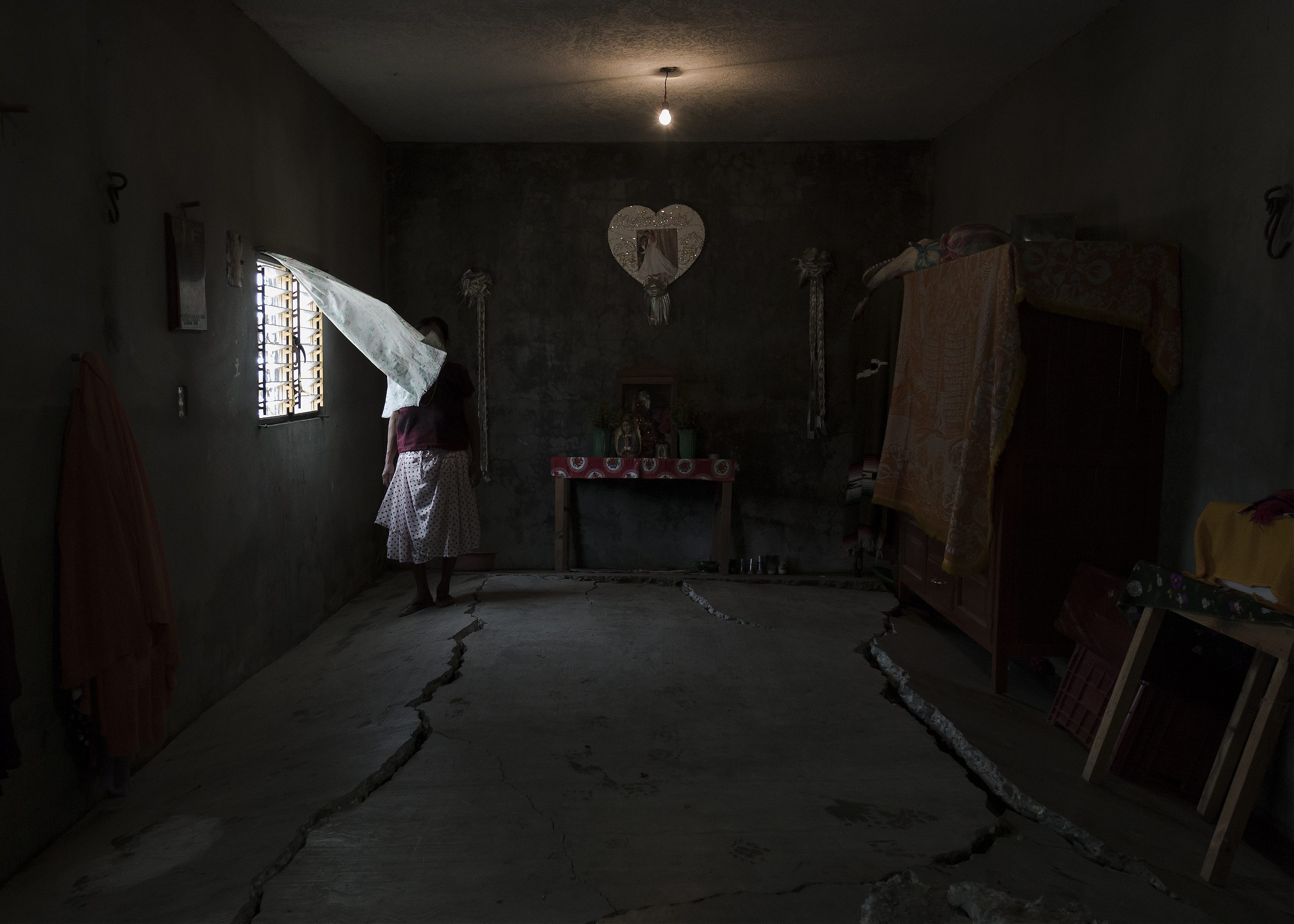
When another quake hit the Istmo on Sept. 23—this one 6.1 in magnitude but with its epicenter in the Istmo itself—most news outlets reported on Chilangos (as residents of Mexico City, where the quake was also felt, are called) pouring, panicked, from their homes, rather than the fresh round of building collapses and the renewed sense of desperation in the Istmo. Ruben Toledo Santiago, a vegetable vendor in Ixtaltepec, told me that just that morning he’d noticed people returning to the streets, building a new kind of normalcy from the debris. Then the second quake struck. “I know lots of people who left after the 23rd. There was a mass exit. They said, ‘If god wills it, we’ll see you for the holidays in December,’” he told me one afternoon, sitting on the curb across from the ruins of the 100-year-old brick house that used to be his bodega. After that, even those few people whose homes were intact started sleeping outside. The ground kept trembling three, four, five times a day, thunder rolling up from under the streets. Who knew what could come next?
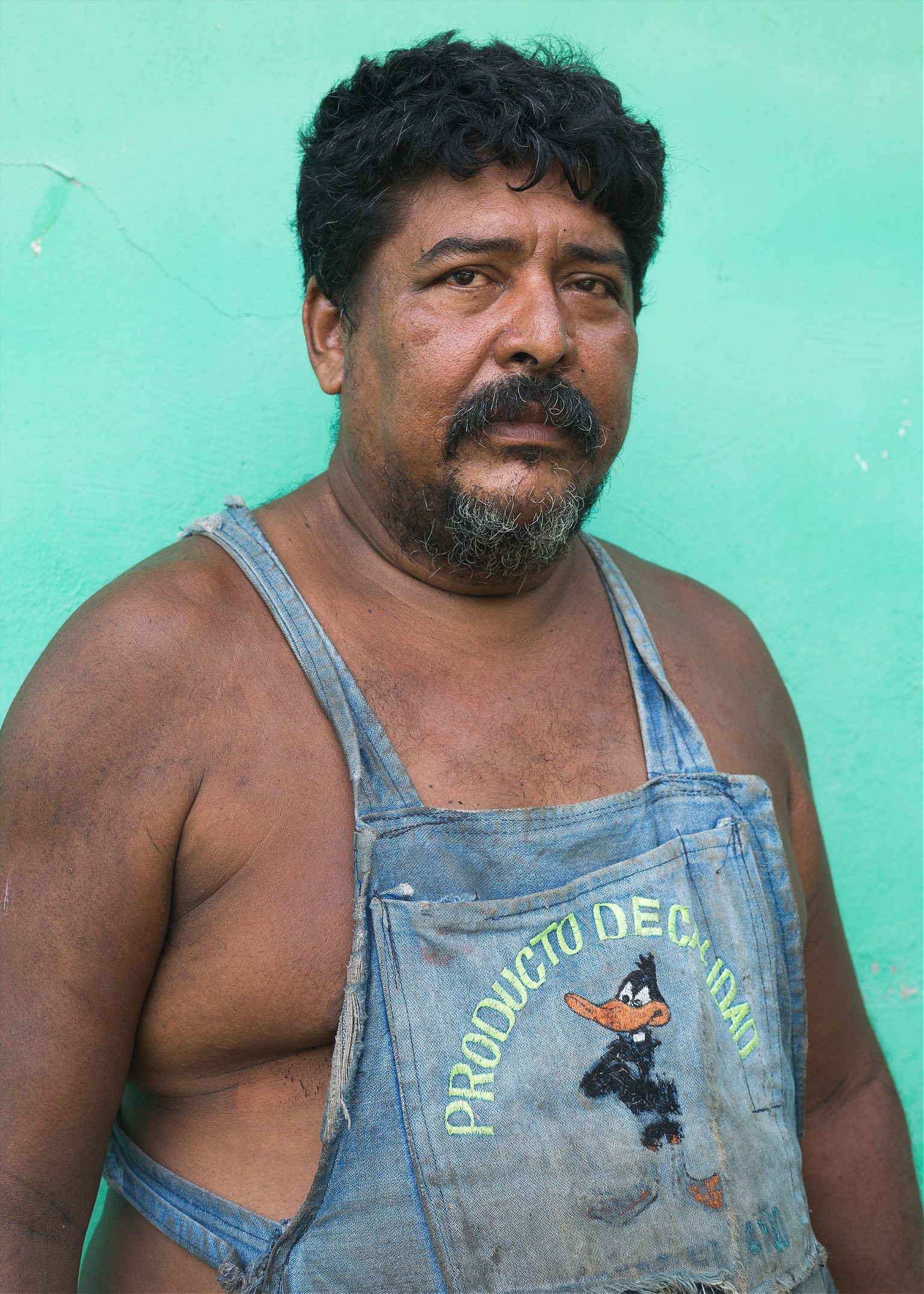
The answer was rain, the first real rain the region had seen in over four years. The lagoon invaded Zaragoza’s garden, filling it with tiny, sharp-toothed fish that nibbled at her toes. She and others in San Mateo slept (and are still sleeping) suspended in hammocks over stagnant pools of water; skin and stomach infections are rampant now. In Ixtaltepec, Gloria Nuñez and her family moved rubble farther and farther into the street with each passing night to keep cars—redirected down their formerly quiet street thanks to a bridge that collapsed in the second quake—from splashing silty water on them.
By the end of October, the annual north winds, powerful but ordinary, had blown in—gusts up to 180 km/hour rushing out to sea. The winds, Zaragoza told me, might take some of the floodwaters with them, but they would render tarps useless. So where would they sleep then? A blessing became a curse, a marker of the seasons became a brutal enemy—disaster upon disaster, chaos upon chaos.
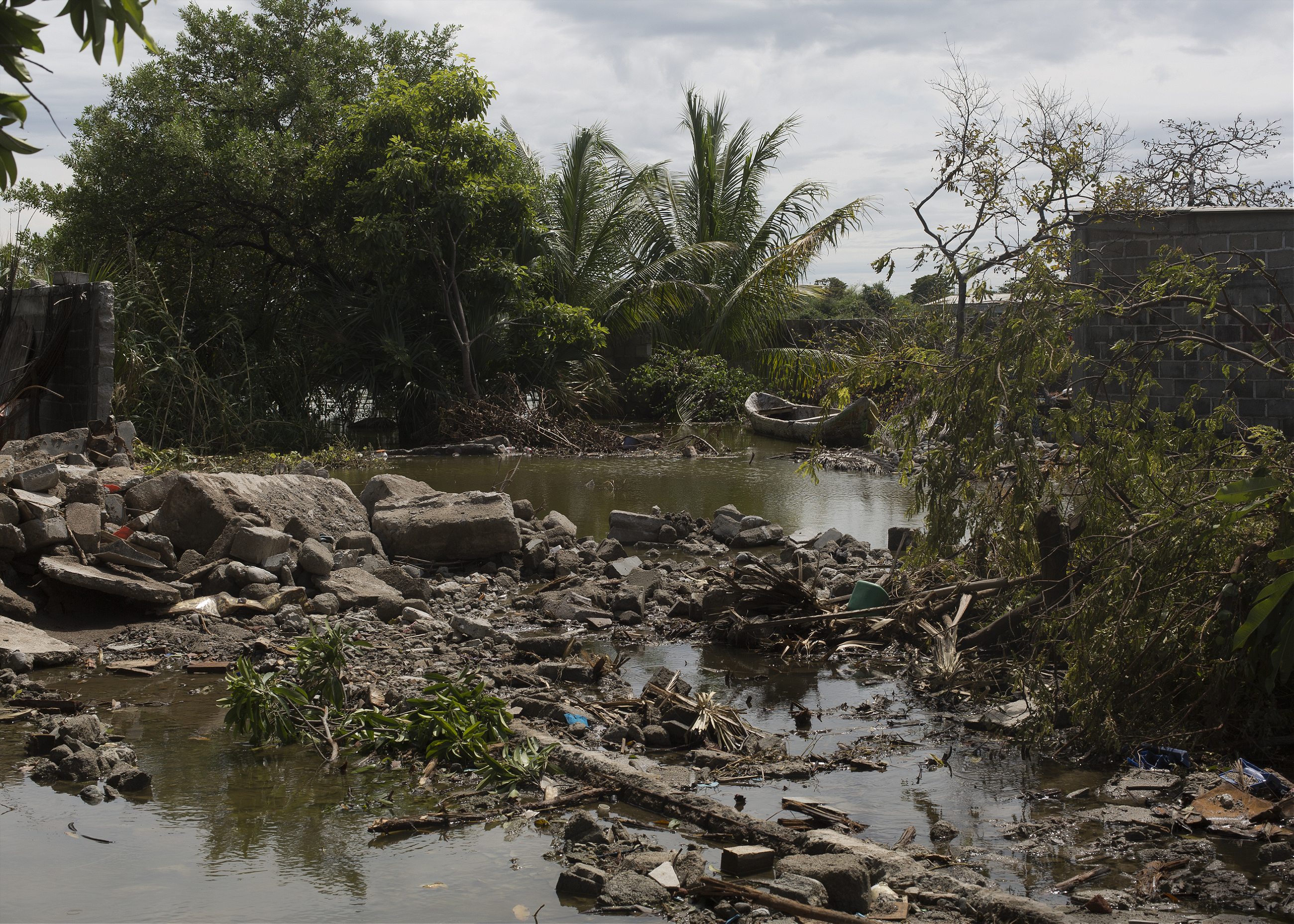
The moment the dust cleared, the rumors started. Nuñez’s friends told her that, on the night of the quake, they’d seen a beam of white light sending sparks into the sky. There were stories of a new hot spring bursting from the hillside at Nizanda, a village known for its thermal springs, and of other villages where tar had bubbled up from the ground. People said a new volcano was forming underfoot. What other explanation, they reasoned, for such an unprecedented seismic event?
Other explanations came quickly: mining in the nearby hills; the U.S. government testing missiles in the Pacific for its impending war with North Korea; maybe the Mexican government itself, which, some suspected, had discovered a way to set off earthquakes in an attempt to drive the people from their increasingly valuable land. In San Mateo, people talked of an ancient serpent god who lives below the sand.
An evangelical fisherman in Juchitán, the town hardest hit by the quake, blamed the disaster on “Catholics who drink and have parties” and on homosexuals and trans people (in the Istmo, where these communities are more accepted and visible than anyplace in Mexico outside the capital, they’re known collectively as muxes, a term that technically refers only to those who identify as belonging to a third gender but that, particularly in recent years, has come to embrace anyone falling into the general category referred to here as diversidad sexual, or sexual diversity). In Santa María Xadani, a fishing village just outside Juchitán, Josue Lopez, a friend of Aquino’s and a local coordinator for Transformandome, told me that people in his village believed “envy, delinquency, and adultery provoked this.” His friend Antonia, who earns her keep by making paper flowers for the parties that are a constant fixture of Istmeño culture, chimed in. “One lady told us, because there are so many muxes, that that’s why God sent us this punishment.” She laughed. “But if it were because of us, God would have to destroy the whole world.”
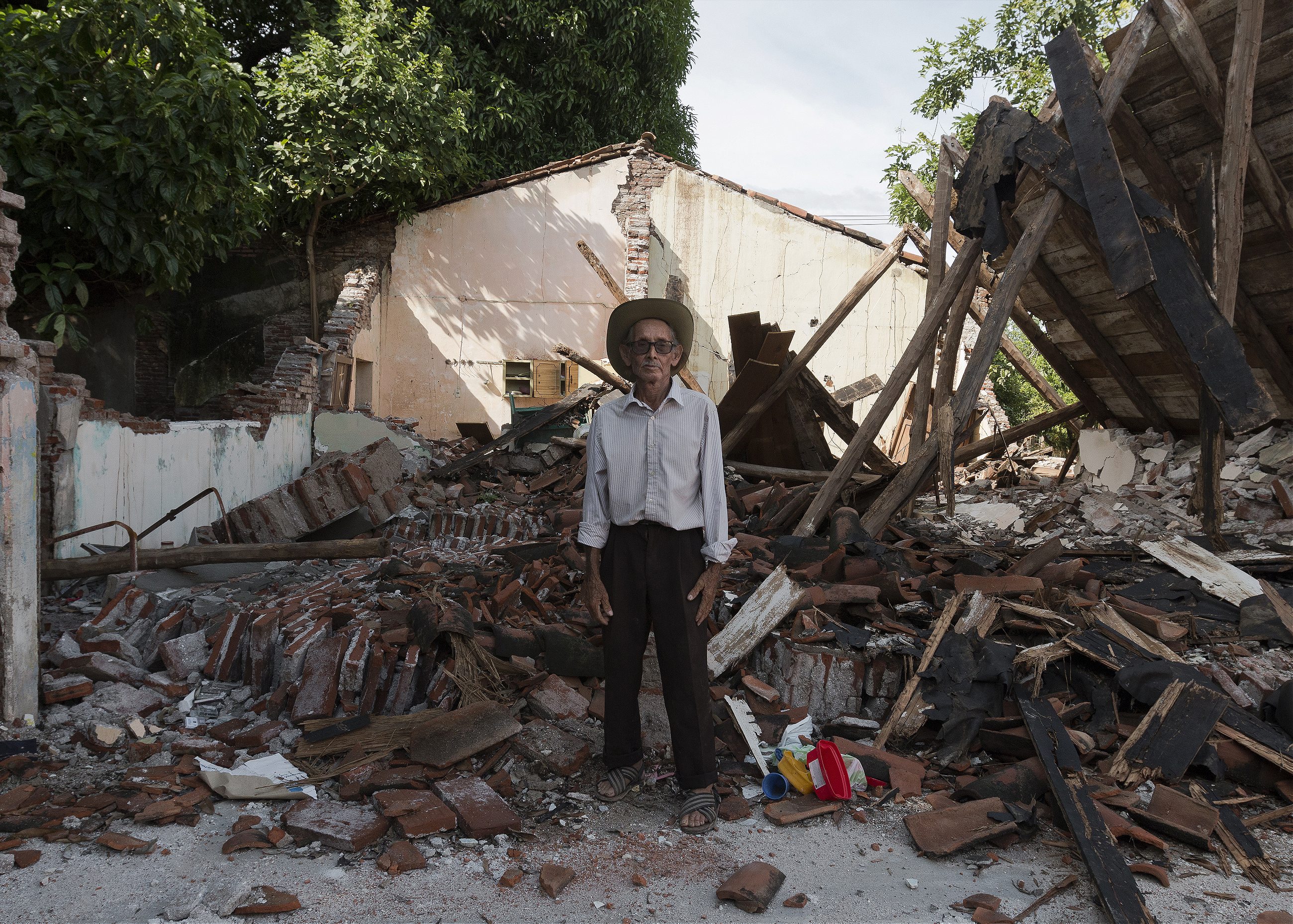
An old man in Ixtaltepec, 84-year-old Fortino Cabrera Martinez, told me he’d foreseen the disaster in a God-given vision but had kept it to himself because, he explained, the visions “are secrets from God.” A few minutes later, he leaned in conspiratorially and offered another explanation. “The Japanese, they’re fucking clever,” he said. “They swim underground.”
There were other rumors, too, uglier ones, that were more closely grounded in truth. While driving us down from Mexico City, Felipe Luna, one of the photographers I was traveling with, received a push notification from Twitter. A news story was making the rounds about a group of people bringing aid from the capital who’d been assaulted and robbed somewhere on the road in Oaxaca. The women had been raped, the car riddled with bullets, the goods stolen. We found out later that this wasn’t exactly true—the assault had actually taken place in the neighboring state of Veracruz (we found this out while stuck on the roadside with a burst tire in Veracruz)—but it was true that cars were being stopped in the outskirts of the city, that aid was being stolen, and that thieves and bandits were pilfering what they could from people’s abandoned homes as they slept. In a week reporting, I didn’t meet anyone who had been robbed personally. But Nuñez’s son slept with a hammer under his pillow, and her brother with a machete. You can’t be too careful.
Rumors are both a symptom and a cause of disorder, and in the days and weeks following the quake, information, like everything else in the Istmo, was in short supply. Relief coordinated by Istmeños living in other parts of the Republic arrived almost immediately, but it took three days—and in some cases a full week—for the federal government and military to turn up. There’s now a navy-run hospital in Ixtaltepec and a temporary hospital in Juchitán; there are federally operated albergues serving food in most communities. Military vehicles patrol the streets in Union Hidalgo and Juchitán, and bring aid to San Mateo daily, stopping along the causeway that leads into town to hand out sleeping mats and food to people from outlying neighborhoods who spend their days waiting along the shade-less roadside under a blazing hot sun. James Tucker Loaeza, a teacher from the Catholic Marist Brotherhood who, along with three colleagues, organized a group called Istmo Periferia to distribute aid to the region’s smaller towns, said of the military, “They took too long to come, but once they got here, they did a good job.”
Even still, Raúl Herrera, one of Tucker’s partners in the Istmo Periferia project, estimates that the ratio of aid coming from private donors versus the government is likely as high as 7 to 1, though no one knows for sure. Since the Mexico City earthquake on Sept. 19, he says, it has also slowed down considerably. What aid continues to flow in—shipped in from distant corners of the republic, driven in from the state and national capitals, distributed by international charities and private citizens—remains woefully disorganized.
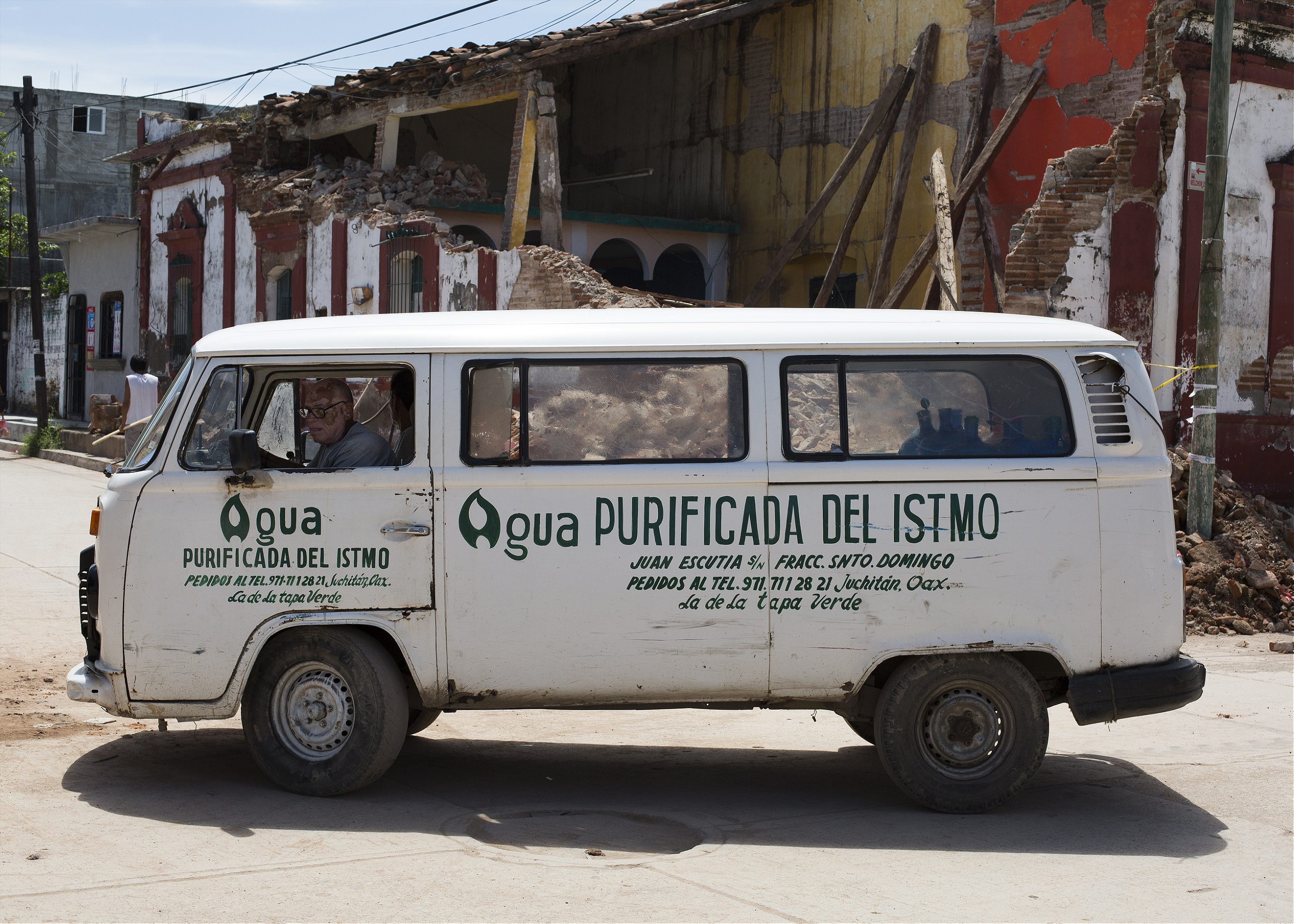
Most people I met, particularly in peripheral towns like Union Hidalgo and San Mateo, describe distribution efforts as haphazard, at best, usually given out first come, first serve from fixed points in central locations. One afternoon in San Mateo, I saw a line of women as long as two city blocks. I asked what they were waiting for. They had no idea. It turned out to be three guys from Mexico City who had parked their truck to give out rice, beans, and water. By the time I reached the head of the line, they’d nearly run out.
Later that day, I visited Laguna Santa Cruz, the last colonia, or district, in San Mateo. Dragonflies swarmed the scraggly main square, hovering low over the unkempt grass. Felidia Gijon Guajardo, the director of the local community kitchen, worked over a low table slicing onions to throw into a huge, seething pot of mondongo—or tripe soup—that would feed some 200 women and children from the village. Two other volunteers baked totopos—the hard, flat tortillas typical of Oaxaca—in a clay oven called a comezcal. They had eight kilos of masa that day, Gijon told me, and they would almost certainly run out before every mouth had been fed.
None of these ingredients had been donated. Gijon and three other local women had opened the kitchen just a few days earlier, traveling back and forth to San Mateo to buy water and vegetables with their own money and going into the underbrush to scavenge for firewood, a difficult task in the rains. Government assistance arrived in Santa Cruz on the same day I did, Oct. 5, in the form of gas canisters, two large trucks of basic foodstuffs delivered by the navy, and a big tankard of drinking water, enough, the men who installed it told me, for about two days.
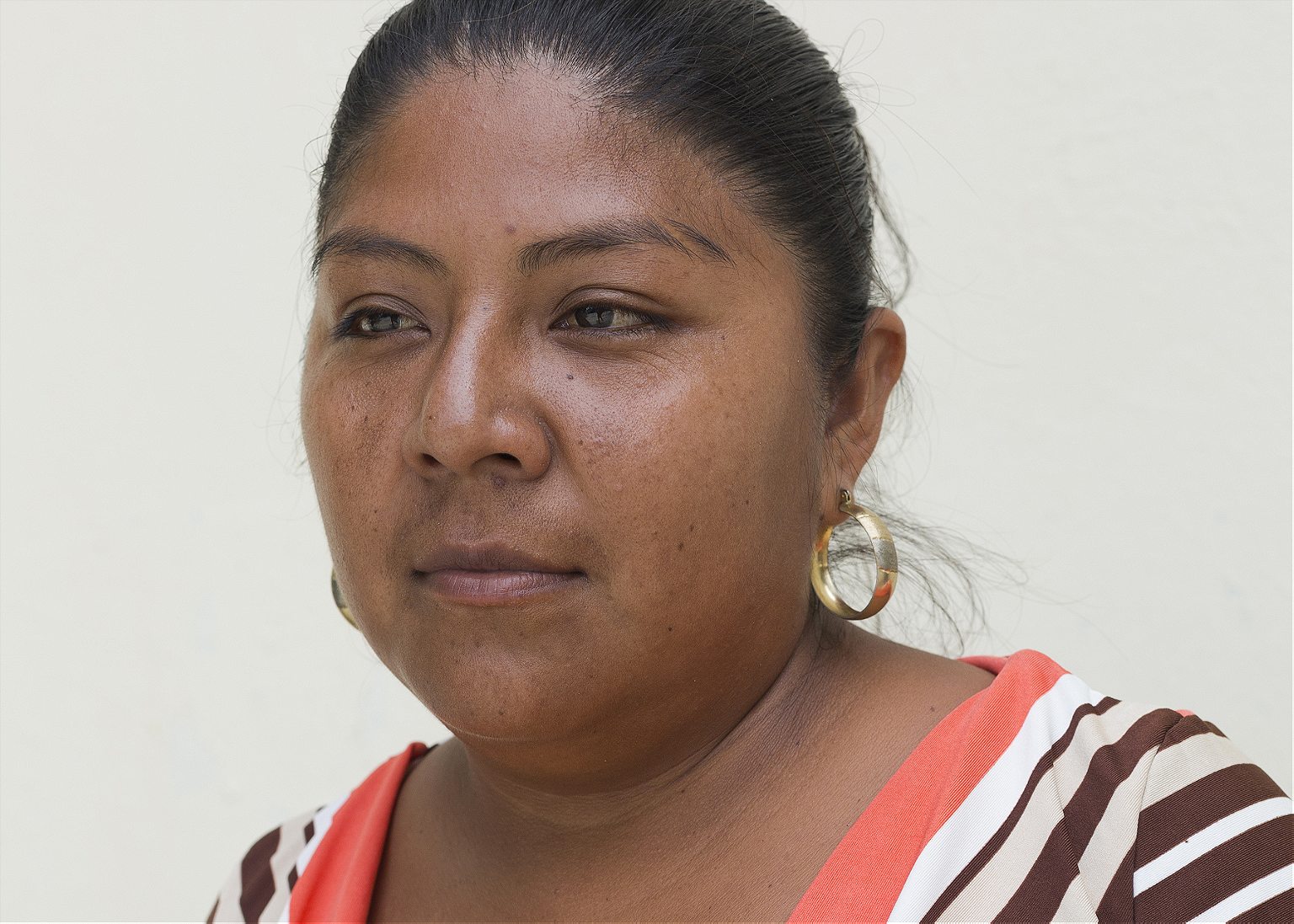
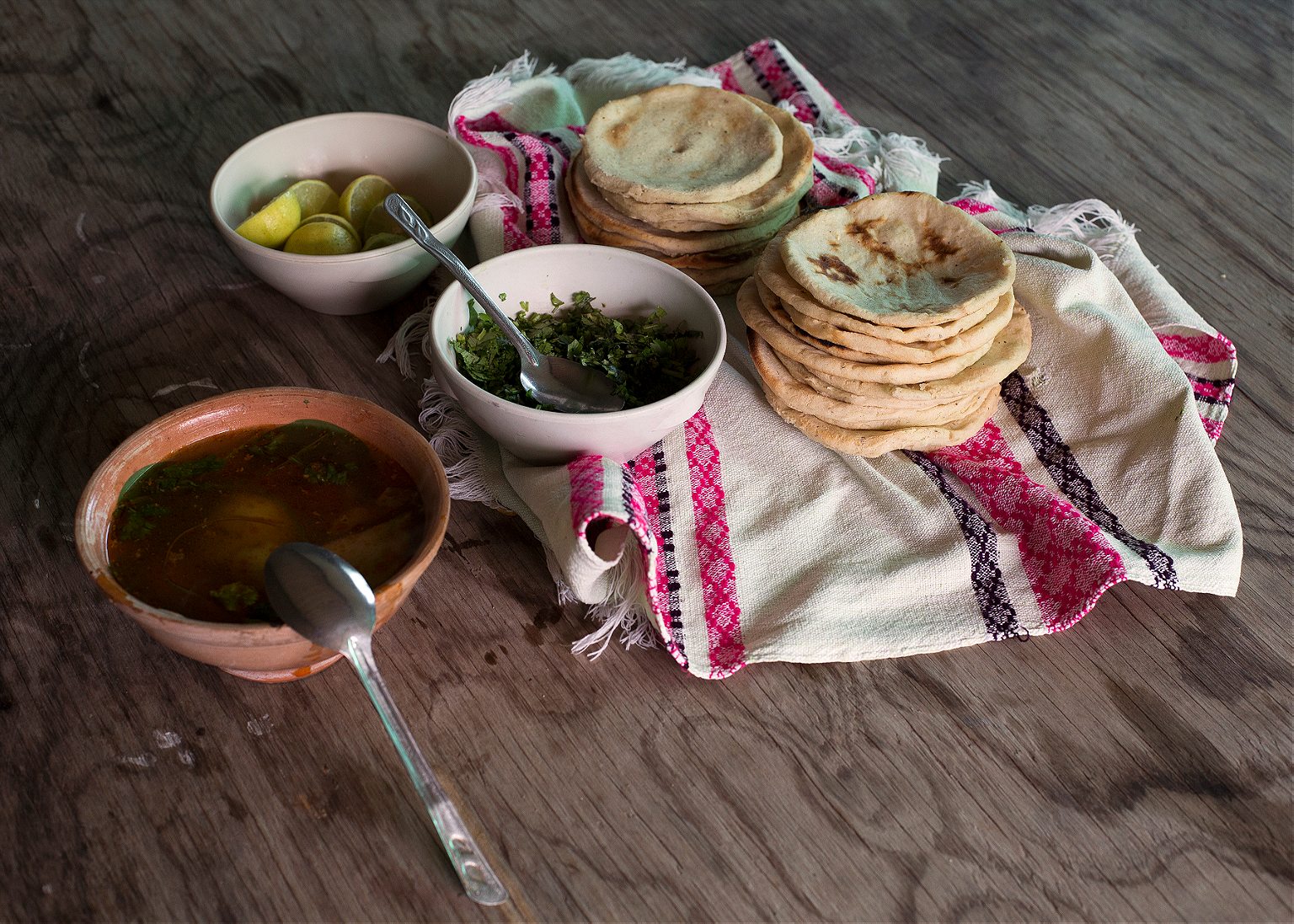
Before that, Gijon said, what little aid had made it to Santa Cruz had come almost entirely from a small handful of private vehicles, from the Catholic parish in San Mateo, and from Caritas, the Catholic charity, which they themselves had petitioned for help. “Most people get to the center of San Mateo and think that’s it, but what about us?” Gijon asked, resigned and exhausted, tossing vegetables into the pot, squinting against banks of smoke and the shattering afternoon sun. She shrugged. “If you want help, you have to go out and find it.”
“—who has the best joke,” his wife, Lupita, interjected, coming out of the kitchen with a porcelain pitcher of coffee. She laughed. I asked how she remained so upbeat. “I don’t know how other people are doing it, but for us it’s our work that keeps us going. I go to bed so tired and I wake up with so much to do that I don’t have time to be sad. Who knows how I’ll be down the line. But for now, well, things are things. You know, after the earthquake I had to take everything out of the house and I said to myself, ‘I have so much stuff!’”
She poured me a cup of coffee and nodded to the pitcher in her hand, white and florid with a red rose appliqued onto its body. “Like this pitcher, I got it 13 years ago for my wedding and, you know, I’d used it once—and I thought, well, I’ll use it now, it’s about time, before there’s another earthquake.” She winked. “In times like these, we have to be elegant.”
Even now, the ground keeps shaking, and no one really knows why
Following the first quake, community organizations sprang up spontaneously in nearly every municipality in the region. In San Mateo, the teachers at the Marist school, who work throughout the year as volunteers, set up their own community kitchen, principally to feed women and children, and have established a radio station to broadcast music and information for the community. Another kitchen came up at the preschool run by the sisters Beatriz and Reyna Gutierrez, both important figures within the community. The school building itself was destroyed in the quake, its top half broken from its foundation and shifted queasily to the west. On my last day in San Mateo, I watched Reyna, who’d founded the school in 1972, prepare a large pot of lentils while Beatriz met with representatives from the State Commission on Human Rights—not an obvious task for a private citizen.
Relief is still trickling in, though rarely in the form that’s most needed. There’s food now in most households, but there are few intact homes. In Juchitán, some 75 percent of the city’s 20,000 private homes were damaged on Sept. 7 alone; no one knows how many have fallen since. In Ixtaltepec, Herrera and Tucker estimate, as many as 90 percent of houses were damaged. The night we arrived there, Tucker showed us around what remained of the town. Hundred-year-old houses had collapsed into the street. Newer, two-story structures had fallen like ill-made soufflés. Every street was tented with tarps. Some families had moved their TVs outside. Many streets were impassable: They’d become living rooms, rather than thoroughfares. Most structures were marked with folio numbers issued by government inspectors who had come out shortly after the first quake but had not returned since. Others were marked with big orange X’s to indicate total demolition: “Like the angel of death,” Tucker said.
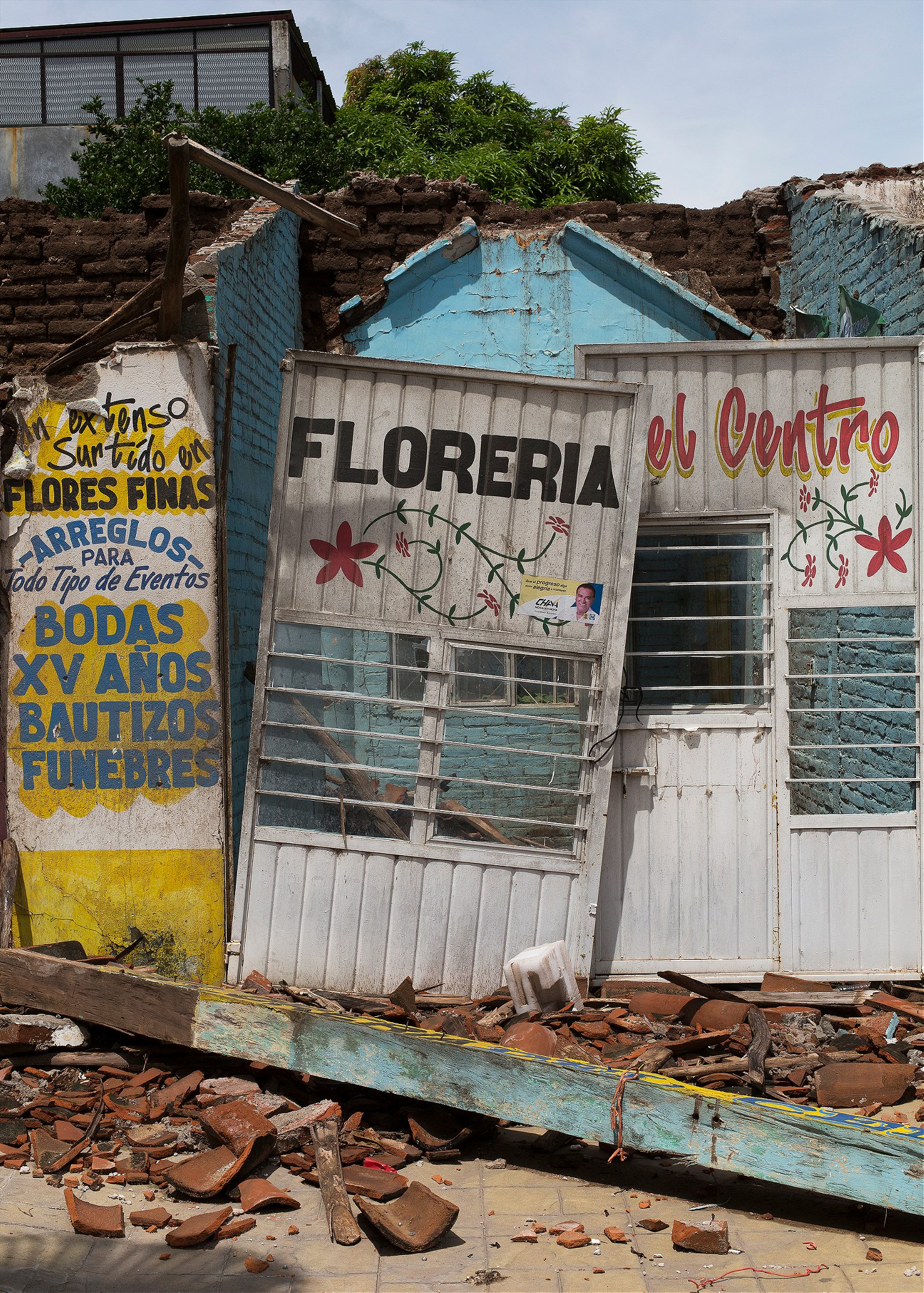
Mexico’s much-loathed president, Enrique Peña Nieto, didn’t arrive in Ixtaltepec to announce a federal aid package until the week I visited. For houses that were completely destroyed, the government would provide 120,000 pesos (about $6,300), split between two cards, one for materials and one for labor, over four months. With the announcement, he indicated a group of preferred distributors (most, though not all, friends of the administration). That sum, people told me, would hardly be enough to build a foundation. Others pointed out that, with the rains still going strong and no indoor spaces intact, buying cement would be useless until the dry season, several months hence. Others who left their homes to recuperate away from the site of their trauma have said that coming back to collect their cards now would be impossible.
People are grateful for the help that has come to them from elsewhere in Mexico, grateful, in some cases, that anyone cares at all. But generosity is no substitute for organization and the people should not have to be a replacement for the government. Even now, it remains unclear exactly how much damage has been done, exactly how much aid has come in, exactly who’s received it, and exactly what they’ll need next. Even now, the ground keeps shaking, and no one really knows why.
We finished our day with Kristal Aquino in Union Hidalgo over beers at a place called Casona Bar, which she’d described as one of the town’s main queer-friendly places. Before the earthquake, it was housed in a former evangelical prayer house (“the seats had the psalms written on them,” she said), but because of damage in the quake, it had moved to a preschool, shut down, like all schools in the area, until something like order could be restored. People drifted in and out, sipping at cold beers and wiping sweat from their foreheads. Rain was on its way, once again, but hadn’t come just yet. The humidity was almost intolerable. The bartender, a friend of Aquino’s, delivered plates of snacks as we talked over liter after liter of beer: crab legs and dried shrimp and beef fried with chilies. For a moment, we forgot the circumstances that had brought us here.
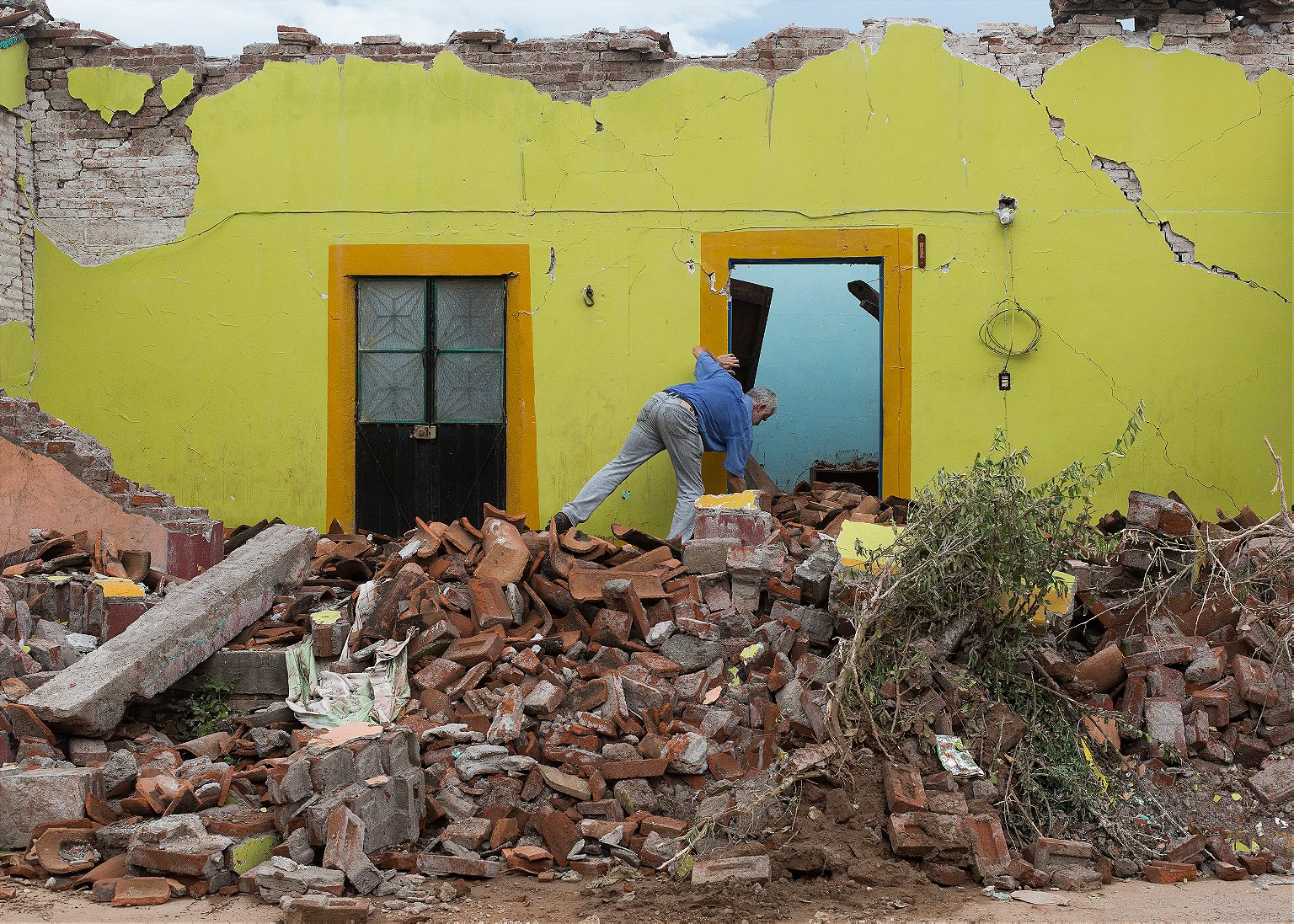
I told Aquino how impressed I was at everyone’s resilience, the standard platitude of the outsider looking for a silver lining to an unspeakable tragedy. People seemed to be coping, I said. They seemed, despite everything, eager to help one another, to get back to normal. Help had been insufficient—it always is—but, as Ruben Toledo Santiago the vegetable vendor had told me that day in Ixtaltepec, “we need to get moving and bring life back to this town. Help,” he’d said, “isn’t going to fall from the sky.” I repeated what Lupita had told me: With so much work to be done, there’s no time to be sad.
Aquino shook her head and cocked an eyebrow. “For now people have help. They’re distracted. But after?” She smiled grimly. “It’s going to be chaos.”
CAMPO (Centro de Apoyo al Movimiento Popular Oaxaqueño) – for more information visit www.campo.org.mx, their facebook page, or contact via email at campooax@prodigy.net.mx.
Caritas Mexicana – the Mexican branch of the international Catholic charities can be reached at www.caritasmexicana.org.
Nadia del Pozo and Felipe Luna are independent photographers currently based between Mexico and Spain.
